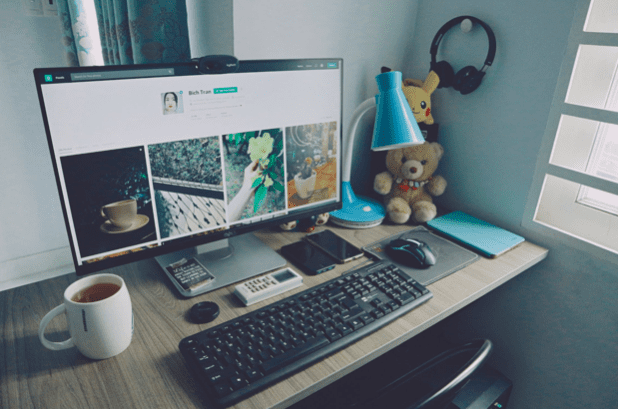6 Ultimate Steps on How to Set Up and Manage Your First Photography Website
Are you a photography fan, and you are not sure how to get the most out of it? Or you are thinking about starting your own photography business, but wondering where to begin? Worry no more because we will provide you with an ultimate step by step guide to make your photography talent more useful.
Creating a great website is mandatory for anyone serious about attracting new customers and bringing in business. Apart from being your virtual storefront, a photography website will also contain essential information that can make potential customers more willing to work with you. A website is a great way to get leads. It is a cost-effective strategy for marketing your photography business. You can also edit it easily whenever you want to refresh your content or portfolio. Here are the six steps that will guide you in setting up and managing your website.

Set up a domain name and hosting
The crucial step in establishing a business is to give it a name. Just like brick and mortar stores need a physical business address, online businesses need a virtual address. For this, you need to choose and set up a simple domain name that should be easy for the clients to remember and access. It should also be an apparent reference to the type of business you run. The other thing you need is the hosting server, where your files and folder are kept safe. The best move would be to go for well-known and cost-effective domains and hosting services. You can choose the domain name and hosting services with different companies, but to keep things simple, select the same company for both of them.
Logo Design and Themes
To set the logo for your website, you must consider the purpose of your business. For example, what type of photography do you intend to focus on? You can set your site up to different kinds of photography or focus on one type. Your logo design must complement the purpose of the website.
Moreover, if you have a keen eye towards some designing and decoration, then setting up a theme can be fun. There is an unlimited number of free online themes available, and you can choose one for your website. If you are a perfectionist, you can choose to buy a theme. The themes available with the paid option incorporate some exclusive designs and features that make your website appear professional and attractive. All in all, whatever you choose to consider whether it suits your website or not from multiple angles.
Add Vital Content
Never forget to mention the purpose of your website and all the other relevant details about it. Remember that without the necessary information, your clients will never figure out how to contact you and what to ask from you. Therefore, adding vital content to your site is necessary. The content should provide information about your services and your portfolio. The following are the pages that should be available on your photography website:
- Home Page: This is the main page of the website that displays an overview of the content available at the site, and it serves as a hook that leads to different photography categories available.
- About Us: Here, you should provide concise information about the purpose of the business and a brief history.
- Services: Provide relevant information about the services you offer.
- Blog: Display some articles relevant to your business website.
- Portfolio: Showcase different photographic categories wherein you must place only the best pictures you have clicked so far.
- Contact Us: Create this page to enable your customers to reach you easily. Most successful enterprises provide multiple contact options, including telephone numbers, email addresses, and Skype addresses.
Adding the pages mentioned above to your website is vital because when people who visit our site can see the necessary information, they will feel motivated to contact you and use your services.
Seek Guidance
Creating a website requires thorough consideration, but once you get all set up, asking your peers and friends for their suggestions can help you improve it. Visiting other photography websites is also helpful. You can learn a lot from other successful photography websites. Studying the work of other photographers can help you improve yours. To achieve success in any field, it is essential to study others and remain inspired. According to Chris Parker from Parker Photographic, you can avoid some challenges that all new beginner photographers face by sharing information about your struggles with other success-minded photographers. You can share your work and ask questions about anything you are struggling with when it comes to photography, including using editing software and capturing more creative images.

Consider the Picture Sizes
It is essential to consider whether your website loads quickly or not. Nowadays, mobile devices and tablets are pervasive, and many people search for pictures using these mini devices. Large image sizes usually make a website load more slowly, and the images may not appear to be of excellent quality. So, you need to upload pictures of the appropriate size.
Generate Your Leads for Better Visibility
To be successful, you need to adopt some SEO tactics. One of the commonly applied tactics in online business is the use of appropriate keywords, meta descriptions, and tags. The images cannot speak for themselves. Adding meta descriptions, titles, and keywords along with the photos, enable the search engines to index your photographic content. Make sure that you also outline the locations, such as the cities and suburbs, where you offer photography services. This way, your website will appear on search engine results pages when people search for photographers in those areas. If you are new to SEO, you can read some guides, do a little research on the internet regarding how to generate the SEO leads or hire someone to teach you.
Conclusion
The above are the vital elements you should be aware of and complete as you set up your photography site. Creating and managing a photography website is not a linear process. Instead, it requires your repetitive attention. From time to time, you need to update it by uploading some recent photos that could grab the attention of the viewers. Also, make sure you update the blog on your site regularly.




